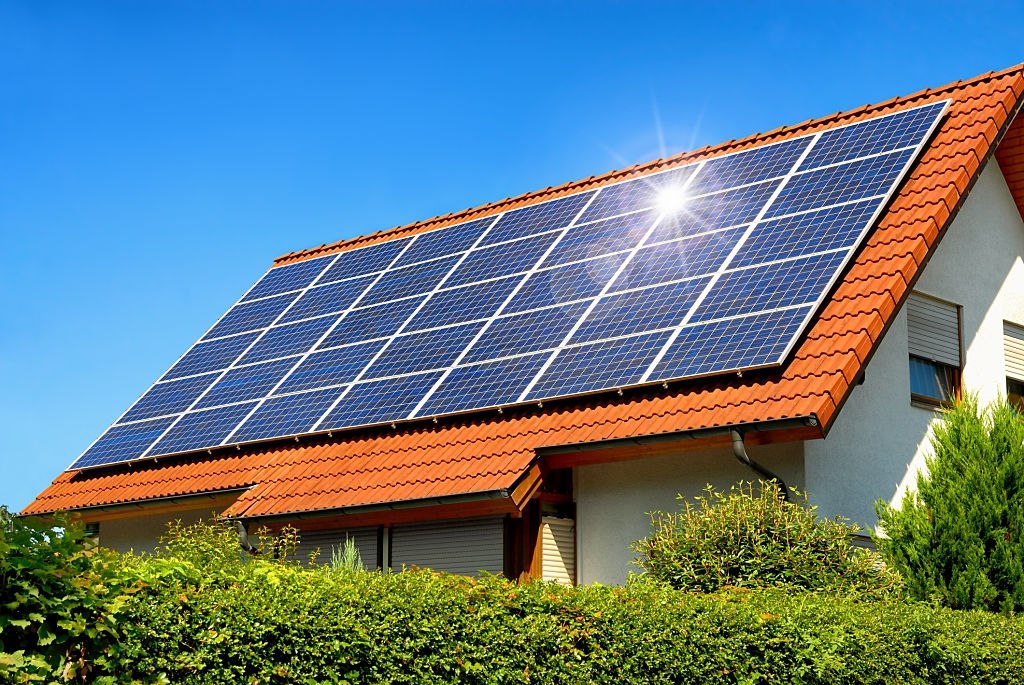Solar Roof Top System ON Grid

A grid-connected photovoltaic power system, or grid-connected PV system is an electricity generating solar PV system that is connected to the utility grid. A grid-connected PV system consists of solar panels, one or several inverters, a power conditioning unit and grid connection equipment. They range from small residential and commercial rooftop systems to large utility-scale solar power stations. Unlike stand-alone power systems, a grid-connected system rarely includes an integrated battery solution, as they are still very expensive.
How a Grid Connected System Works
 Solar Panels convert sunlight into DC electricity.
Solar Panels convert sunlight into DC electricity. Inverters turn DC electricity into usable AC electricity.
Inverters turn DC electricity into usable AC electricity. Electricity Smart Meters measure how much electricity is used & sent to the grid.
Electricity Smart Meters measure how much electricity is used & sent to the grid. Solar Energy can be used to power any household electrical appliance.
Solar Energy can be used to power any household electrical appliance. Solar Energy that isn’t used by you is fed back into the grid to be used by utility company.
Solar Energy that isn’t used by you is fed back into the grid to be used by utility company. Not only you save money from generating your own electricity, any power your system feeds back into the grid will be credited to you on your next electricity bill.
Not only you save money from generating your own electricity, any power your system feeds back into the grid will be credited to you on your next electricity bill.
Advantages
Save more money with net metering
A grid-connection will allow you to save more money with solar panels through better efficiency rates, net metering, plus lower equipment and installation costs
Batteries, and other stand-alone equipment, are required for a fully functional off-grid solar system and add to costs as well as maintenance. Grid-tied solar systems are therefore generally cheaper and simpler to install.
The utility grid is a virtual battery
Electricity has to be spent in real time. However, it can be temporarily stored as other forms of energy (e.g. chemical energy in batteries). Energy storage typically comes with significant losses.
Why
Renewable Energy Source?
Save
 77kg Coal
77kg Coal
combustion
 136kg GHG emissions
136kg GHG emissions
into the atmosphere
 478ltr Water
478ltr Water
usage





